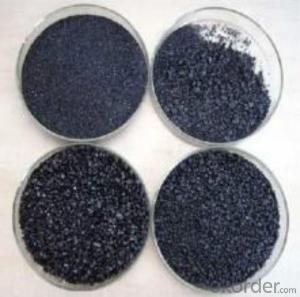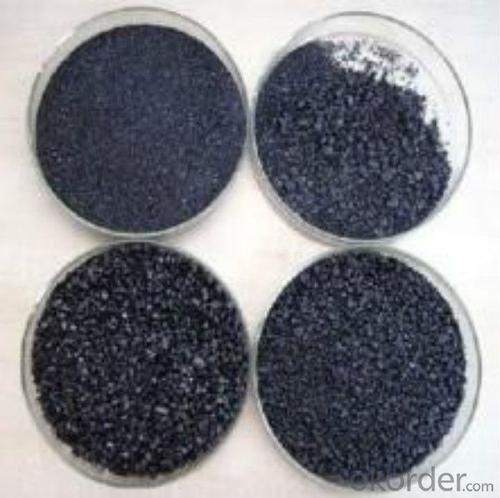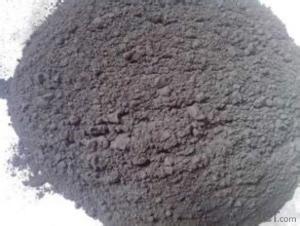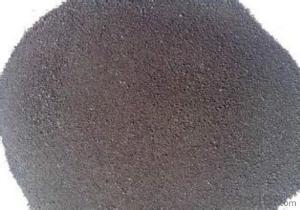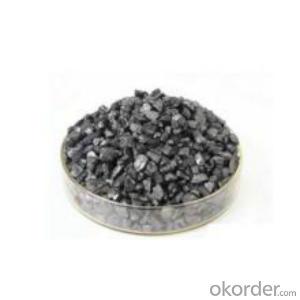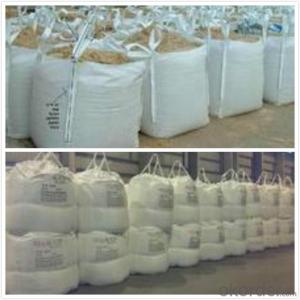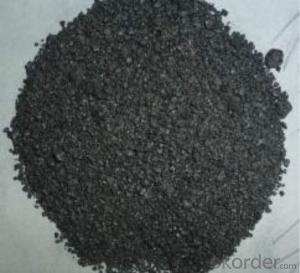FC 99% Calciend Petroleum Coke for Steel plant
- Loading Port:
- Qingdao
- Payment Terms:
- TT OR LC
- Min Order Qty:
- 20.4
- Supply Capability:
- 2040 m.t./month
OKorder Service Pledge
OKorder Financial Service
You Might Also Like
Brief introduction
Calcined Petroleum Coke comes from delayed coke which extracted from oil refinery. Although Calcined Petroleum Coke contains a little bit higher level of sulfur and nitrogen than pitch coke, the price advantage still makes it widely used during steel-making and founding as a kind of carbon additive/carburant.
BaoSteel is world famous organization. It is more and more crucial in the industry
Features
Our product has follwing advantages:
The morphology, chemistry and crystallinity of recarburisers
have a major impact on the overall casting cost. The combined
application and cost benefits, which are derived through the
use of Desulco, enable foundries to manufacture castings in a
highly cost effective manner.
reduces
Recarburiser consumption
Power consumption
Inoculant consumption
MgFeSi consumption
Furnace refractory wear
Scrap rate
Tap to tap time
Slag inclusions risk
Chill
increases
Casting microstructure
Productivity
Process consistency
Specifications
Products | CPC | ||
F.C.% | 98.5MIN | 98.5MIN | 98MIN |
ASH % | 0.8MAX | 0.8MAX | 1MAX |
V.M.% | 0.7 MAX | 0.7 MAX | 1 MAX |
SULFUR % | 0. 5MAX | 0. 7MAX | 1MAX |
MOISTURE % | 0.5MAX | 0.5MAX | 1MAX |
Pictures
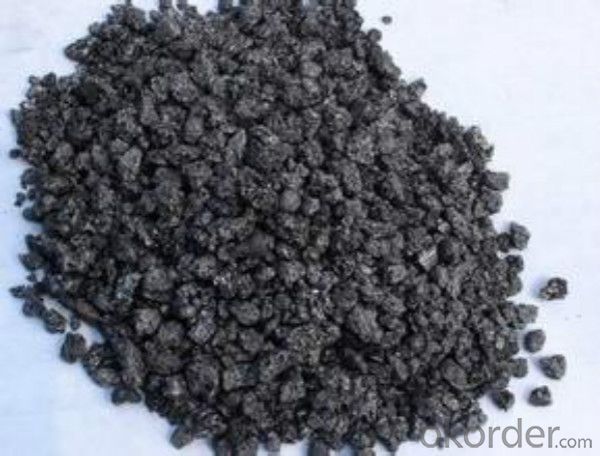
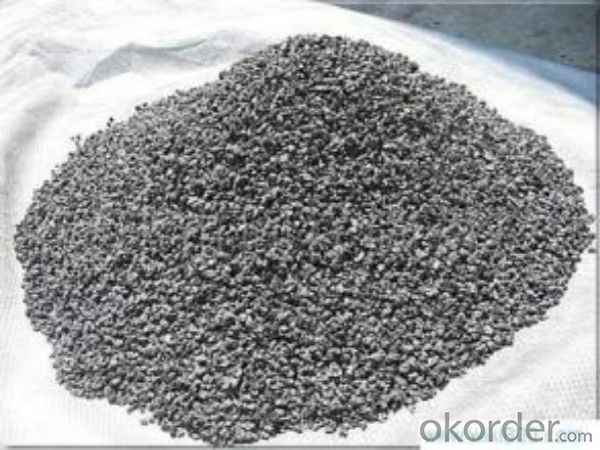
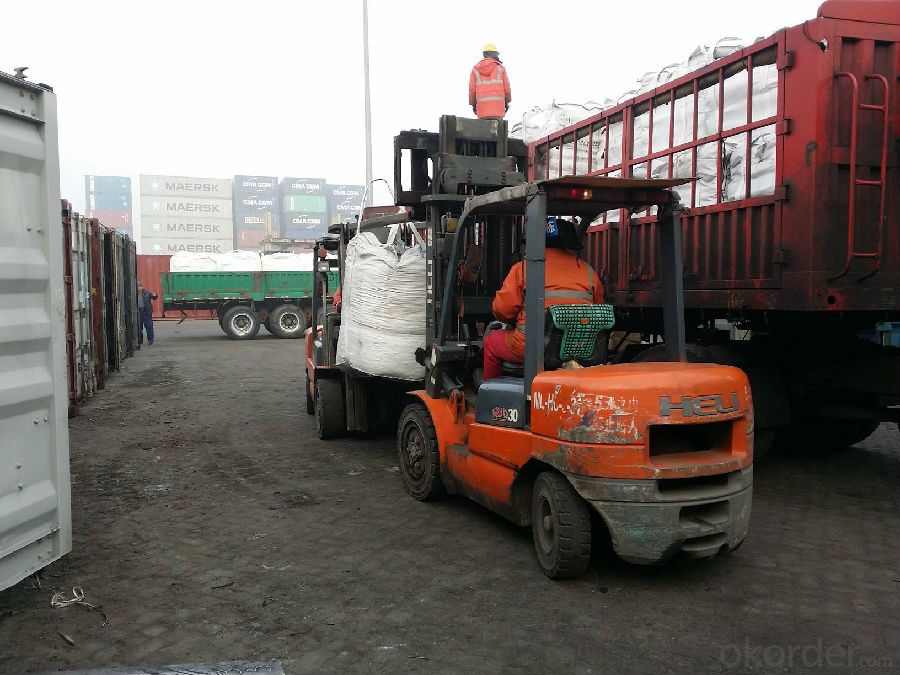
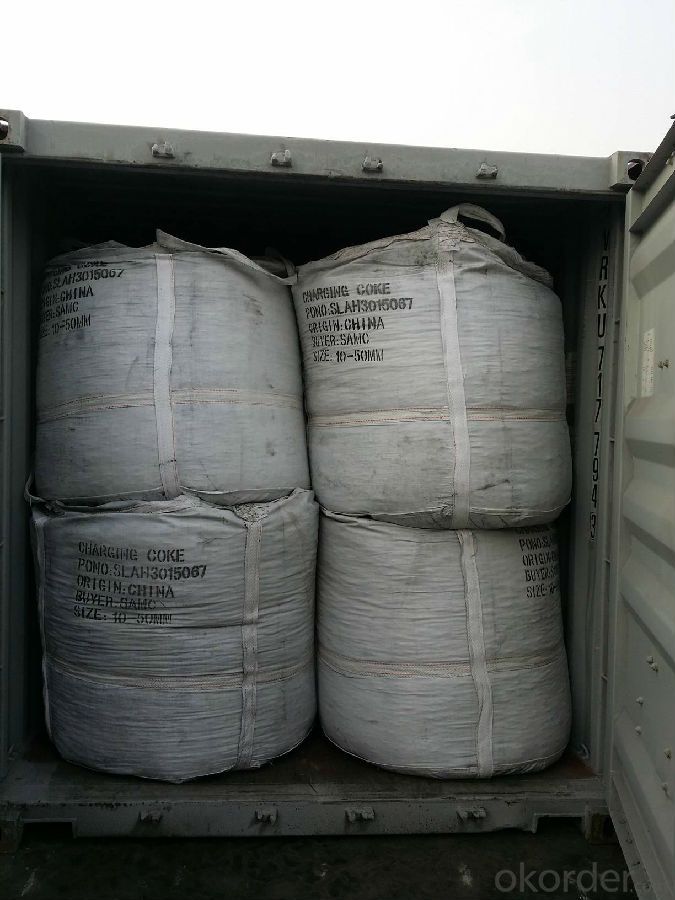
FAQ
1 What is the package?
In jumbo bag with/without pallet
2 What is the delivery time?
25 days after receiving the workable LC or down payment
3 What is the payment term?
T/T, L/C,D/P,D/A
- Q: How does carbon contribute to the strength of concrete?
- There are several ways in which carbon can contribute to the strength of concrete. One primary method involves the utilization of carbon nanotubes (CNTs) or carbon fibers. These substances are added to the concrete mixture to act as reinforcement and enhance its mechanical properties. Incorporating CNTs or carbon fibers into the concrete results in the formation of a network consisting of small, sturdy, and lightweight particles. This network serves to enhance the overall strength and durability of the concrete, making it more resistant to cracking, flexing, and other types of structural damage. Furthermore, the carbon particles also improve the bonding between the cement paste and the aggregates in the concrete. This improved bonding increases the strength at the interface, resulting in a more cohesive and robust concrete matrix. Moreover, carbon can also contribute to the strength of concrete by acting as a pozzolan. Pozzolans are materials that undergo a chemical reaction with calcium hydroxide, a byproduct of cement hydration, to form additional cementitious compounds. These compounds fill in the gaps between cement particles, leading to a denser and stronger concrete structure. Carbon black, which is a finely divided form of carbon, is commonly used as a pozzolan in concrete mixtures. Overall, the incorporation of carbon in concrete, whether through carbon nanotubes, carbon fibers, or as a pozzolan, can significantly enhance its strength and performance. By reinforcing the concrete matrix, improving bonding, and filling in gaps, carbon helps create a more durable and robust material suitable for various construction applications.
- Q: What are the different allotropes of carbon?
- The different allotropes of carbon include diamond, graphite, graphene, carbon nanotubes, and fullerenes.
- Q: What are fullerenes?
- Fullerenes are a unique class of molecules composed entirely of carbon atoms arranged in a spherical or cage-like structure. They were first discovered in 1985 and have since gained significant attention due to their interesting properties and potential applications in various fields. The most well-known and extensively studied fullerene is the buckminsterfullerene, also known as C60, which consists of 60 carbon atoms forming a hollow sphere resembling a soccer ball. Fullerenes can also have different numbers of carbon atoms, such as C70, C84, or even larger clusters. What makes fullerenes remarkable is their exceptional stability and unique structure. The carbon atoms in a fullerene are interconnected through covalent bonds, forming a closed network of hexagons and pentagons. This arrangement gives fullerenes their characteristic shape and provides them with remarkable mechanical, thermal, and chemical stability. Fullerenes possess a wide range of fascinating properties that make them intriguing for scientific research and technological applications. For instance, they exhibit high electrical conductivity and can act as efficient electron acceptors or donors in organic electronic devices. They also have excellent optical properties, such as strong absorption and emission of light, which have led to their use in solar cells and photovoltaic devices. Moreover, fullerenes have shown potential in medical and biological applications. Their unique cage-like structure allows for encapsulation of other molecules within their hollow interior, making them ideal for drug delivery systems. Fullerenes also possess strong antioxidant properties, which make them potential candidates for various therapeutic treatments. In summary, fullerenes are a fascinating class of carbon-based molecules with unique structures and remarkable properties. Their versatility and potential applications in electronics, energy, medicine, and other fields continue to be explored, making them an exciting area of study in modern science.
- Q: What is carbon black pigment?
- Carbon black pigment is a fine black powder derived from the incomplete combustion of hydrocarbons. It is primarily composed of elemental carbon and is widely used as a pigment in various industries, including rubber, plastics, inks, coatings, and cosmetics, to impart a deep black color and enhance the strength and durability of the materials it is incorporated into.
- Q: Where are carbon fiber sheets and carbon fiber sheets used?
- Carbon fiber and carbon fiber cloth, carbon fiber cloth, carbon fiber woven cloth, carbon fiber prepreg, carbon fiber cloth, carbon cloth, carbon fiber fabric, carbon fiber, carbon fiber sheet (prepreg) etc.. Carbon fiber reinforced fabric is one kind of unidirectional carbon fiber reinforced product, usually made of 12K carbon fiber silk fabric. To reinforce the structure of the tensile and shear strength and seismic carbon fiber cloth, the supporting material and impregnated together using a carbon fiber composite material, carbon fiber cloth sheet excellent performance can be enhanced to form a complete system, suitable for processing the building load increasing, the engineering function change, material aging, concrete strength grade is lower than reinforcement design, structure crack treatment, environment protection and repair service component.Carbon fiber board 1) Aerospace: airframe, rudder, rocket engine shell, missile diffuser, solar panel, etc.;2) sports equipment: auto parts, motorcycle parts, fishing rods, baseball bats, skis, boats, badminton rackets and so on;3) industry: engine parts, concrete structures, reinforced materials, fan blades, transmission shaft, and electrical components and so on;4) fire: suitable for army, fire fighting, steel mills and other special high-grade fireproof clothing production.Fire rating: Class A - non flammable, standard GB8624-2006, German standard DIN4102, A1 classCivil buildings, bridges, tunnels, earthquake, reinforced concrete structure, reinforcing material for reinforcement structure, tensile shear and seismic carbon fiber cloth, the use of common materials and supporting adhesive, constitute a complete performance excellence with carbon fiber cloth material reinforcing system. The system is suitable for beams, columns, slabs, tunnels, circles, arcs, etc..
- Q: What are the environmental impacts of burning fossil fuels?
- The burning of fossil fuels has significant environmental consequences that contribute to both climate change and air pollution. When coal, oil, and natural gas are burned, they release greenhouse gases, primarily carbon dioxide (CO2), into the atmosphere. These gases trap heat, resulting in global warming and climate change. The increased concentration of CO2 in the atmosphere is the main cause of global warming, which leads to higher temperatures and changes in weather patterns. Consequently, natural disasters like hurricanes, droughts, and floods become more frequent and severe. The melting of polar ice caps and glaciers is also accelerated, causing rising sea levels that pose a threat to coastal communities and ecosystems. In addition to climate change, the burning of fossil fuels releases other harmful air pollutants, including nitrogen oxides (NOx) and sulfur dioxide (SO2). These pollutants contribute to the formation of smog and acid rain, which have detrimental effects on human health, agriculture, and ecosystems. Furthermore, the extraction and transportation of fossil fuels cause environmental degradation. Activities such as coal mining and oil drilling can result in deforestation, destruction of habitats, and pollution of soil and water. Oil spills from offshore drilling operations, like the Deepwater Horizon disaster in the Gulf of Mexico, have devastating consequences for marine life and ecosystems. Overall, the environmental impacts of burning fossil fuels are extensive and severe. It is crucial to transition to cleaner and renewable energy sources in order to mitigate climate change, reduce air pollution, and protect our planet for future generations.
- Q: What is carbon black filler?
- Carbon black filler is a type of additive that is commonly used in the production of rubber and plastic products. It is a fine, powdery substance that is derived from the incomplete combustion of hydrocarbons, such as oil or natural gas. Carbon black filler is composed primarily of elemental carbon, with small amounts of other elements such as hydrogen, oxygen, and sulfur. The main purpose of using carbon black filler is to improve the physical properties of rubber and plastic materials. It is added to enhance the strength, durability, and wear resistance of the final product. Carbon black filler also helps to increase the stiffness and hardness of the material, making it more suitable for various applications. In addition to its mechanical properties, carbon black filler also provides other benefits. It acts as a reinforcing agent, increasing the tensile strength and tear resistance of rubber compounds. It also enhances the electrical conductivity of the material, making it useful in applications where static electricity needs to be dissipated. Moreover, carbon black filler helps to protect the material from the harmful effects of UV radiation and ozone. It acts as a UV stabilizer and antioxidant, preventing degradation and prolonging the lifespan of the product. Carbon black filler also improves the thermal conductivity of rubber and plastic materials, aiding in heat dissipation. Overall, carbon black filler is a versatile and widely used additive in the manufacturing industry. Its unique properties make it an essential component in the production of a wide range of rubber and plastic products, including tires, conveyor belts, hoses, gaskets, and many more.
- Q: How does carbon impact the formation and intensity of hurricanes?
- The formation and intensity of hurricanes are significantly influenced by carbon, specifically carbon dioxide. The rise in atmospheric carbon dioxide levels is a result of increased carbon emissions from human activities such as burning fossil fuels, deforestation, and industrial processes. This increase in carbon dioxide contributes to global warming. Global warming is caused by the greenhouse effect and leads to higher sea surface temperatures. These warmer ocean waters provide the necessary energy and moisture for hurricanes to form and strengthen. As the atmosphere warms, it can hold more water vapor, which acts as fuel for hurricanes, making them more powerful and intense. The warming of the atmosphere also changes the conditions that affect hurricane formation. It alters the wind shear, which is the difference in wind speed and direction at different altitudes. Low wind shear is favorable for hurricane development as it allows the storm to organize and gain strength. However, global warming can disrupt this balance and create unfavorable wind shear patterns, hindering hurricane formation. Additionally, the increased levels of carbon dioxide in the atmosphere contribute to ocean acidification. When carbon dioxide dissolves in seawater, it forms carbonic acid, which lowers the pH of the ocean. Acidic waters have detrimental effects on marine life, including coral reefs. Coral reefs act as natural barriers against storm surges during hurricanes, but their degradation weakens their ability to protect coastal communities. In conclusion, carbon emissions and the subsequent increase in carbon dioxide levels have a significant impact on the formation and intensity of hurricanes. The warming of the atmosphere and ocean, along with changes in wind shear patterns, create conditions that favor the development and intensification of hurricanes. Additionally, ocean acidification resulting from excessive carbon dioxide levels weakens natural defenses against storm surges. It is essential to address carbon emissions and reduce our carbon footprint to mitigate the potential consequences of climate change and its impact on hurricanes.
- Q: What is the concept of carbon neutrality?
- The concept of carbon neutrality refers to the goal of achieving a balance between the amount of carbon dioxide emissions released into the atmosphere and the amount of carbon dioxide removed from the atmosphere. It is an approach to combatting climate change and reducing greenhouse gas emissions by aiming to offset the carbon footprint of an individual, organization, or even an entire country. To achieve carbon neutrality, one must first measure and understand the amount of carbon dioxide emissions being generated. This includes assessing emissions from various sources such as energy production, transportation, agriculture, and industrial processes. Once the emissions are quantified, efforts are made to reduce these emissions through energy efficiency, transitioning to renewable energy sources, and implementing sustainable practices. However, not all emissions can be eliminated entirely. In such cases, carbon offset projects are utilized to neutralize the remaining emissions. These projects involve activities that remove carbon dioxide from the atmosphere, such as reforestation, afforestation, or investing in renewable energy projects. By supporting these initiatives, carbon neutrality can be achieved by balancing the emissions produced with carbon removal or reduction efforts. The concept of carbon neutrality is crucial in the fight against climate change as it acknowledges the responsibility of individuals, organizations, and governments to take action in reducing their impact on the environment. By striving for carbon neutrality, we can effectively contribute to mitigating climate change and creating a more sustainable future.
- Q: What are the effects of carbon emissions on the stability of river systems?
- Carbon emissions have significant effects on the stability of river systems. The release of carbon dioxide and other greenhouse gases into the atmosphere contributes to global warming, which in turn affects the hydrological cycle and leads to changes in river systems. One of the primary effects of carbon emissions on river systems is increased water temperature. As the planet warms, the average temperature of water bodies, including rivers, rises. Higher water temperatures have detrimental impacts on aquatic ecosystems, leading to reduced oxygen levels and increased susceptibility to disease for many species. This can result in the decline or even extinction of certain fish and other aquatic organisms, disrupting the delicate balance of river ecosystems. Furthermore, carbon emissions contribute to the melting of glaciers and polar ice caps, leading to an increase in water volume in rivers. This can cause river systems to experience more frequent and severe flooding events. The excess water can erode riverbanks, leading to the loss of valuable land and infrastructure. It can also result in the displacement of communities living along riverbanks, exacerbating social and economic issues. Additionally, carbon emissions contribute to the acidification of water bodies, including rivers. Increased carbon dioxide in the atmosphere leads to higher levels of dissolved CO2 in rivers, forming carbonic acid when combined with water. Acidic water can harm aquatic life, particularly organisms with calcium carbonate shells or skeletons, such as mollusks and certain types of plankton. This can disrupt the food chain and have cascading effects on the entire river ecosystem. Overall, the effects of carbon emissions on the stability of river systems are profound. Increased water temperatures, flooding events, and acidification pose significant threats to the biodiversity and ecological balance of rivers. It is crucial to mitigate carbon emissions and adopt sustainable practices to preserve the stability and health of these vital ecosystems.
Send your message to us
FC 99% Calciend Petroleum Coke for Steel plant
- Loading Port:
- Qingdao
- Payment Terms:
- TT OR LC
- Min Order Qty:
- 20.4
- Supply Capability:
- 2040 m.t./month
OKorder Service Pledge
OKorder Financial Service
Similar products
Hot products
Hot Searches
